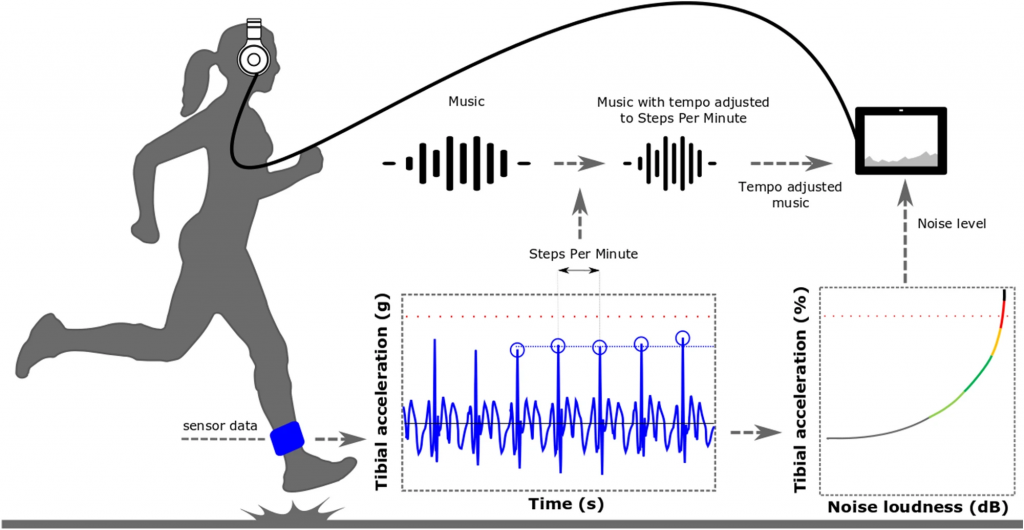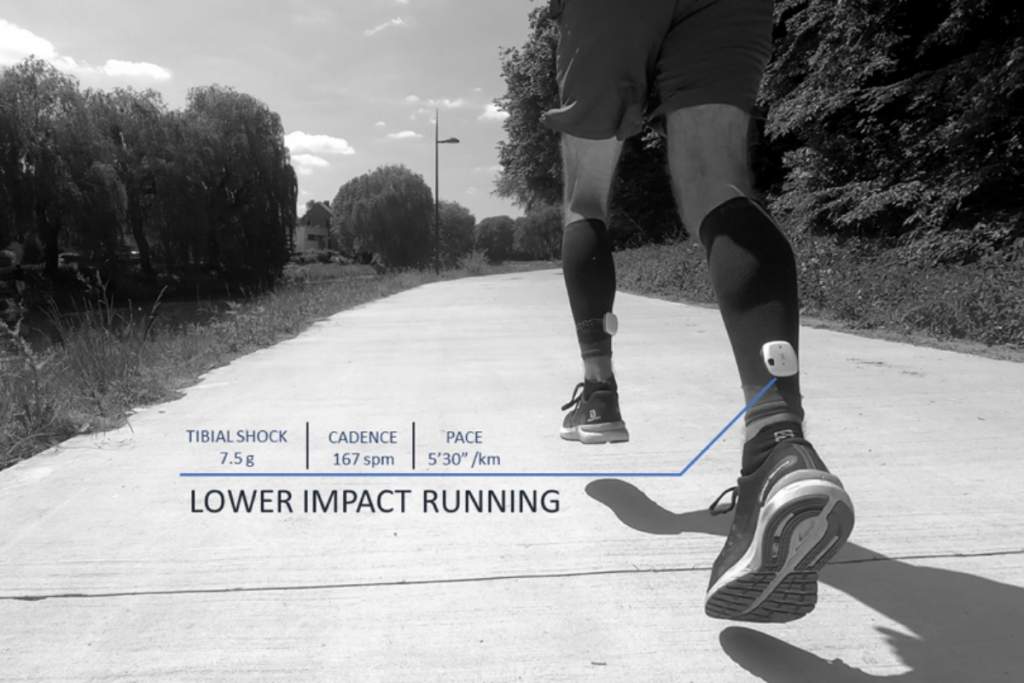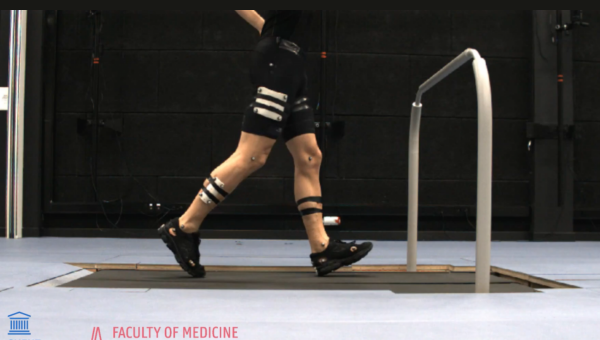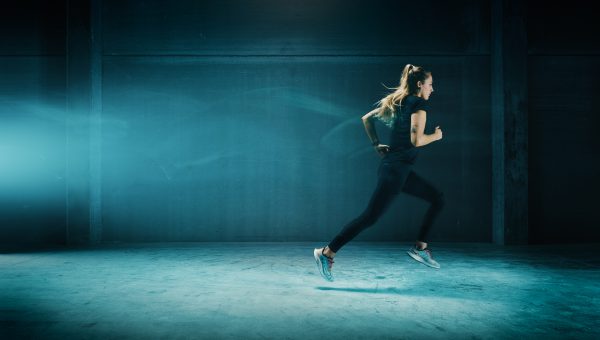Running is very popular among many populations, but many distance runners develop some form of overuse injuries. Running retraining with the help of real-time feedback may help in the reduction and management of some of those injuries. It has been done before in lab environment on treadmill by means of visual feedback on a computer screen in front of the runner. To go out of the lab and clinical environment, we developed a wearable tool that provides music-based feedback on a runner’s impact shock magnitude. (Short video below the blog)
The shocks impacting the lower leg are continuously captured by the Lower Impact Runner system in a reliable and valid way on the level of the lower leg (tibia)*. When the impact shock level is estimated (too) high, online biofeedback on the actual impact level is provided by distorting the music, which the runner is listening to while running. By adapting their running style towards lower impact, people can self-explore their new running technique and hear the effect on the measured impact in real-time. Live feedback is given at a fixed running speed so proper retraining is done without speed changes.
A team of running biomechanics experts, musicologists and engineers have been working on a system that can lower the tibial shocks in high impact runners. A high variety of studies on reliability, validity and proof-of-concept has already been conducted. Future developments and ongoing research with this patent-pending system have the potential to reduce the number of injuries and associated costs, and may help people to ‘keep on running‘.
So what’s the goal?
- To reduce the number of injuries related to high impact shocks on the body
- To monitor and/or reduce the impact loading in overground running by means of an interactive wearable system
- To receive live feedback in a pleasant way at particular running speeds so you can adapt your running styles while maintaining your training speed
Want to see it summarized in a nice infographic? Check it out here.
Which parties are involved in the research?
Ghent University research units (Biomechanics and Motor Control of Human Movement, the Institute for Psychoacoustics and Electronic Music, the Internet Technology and Data Science Lab, and the Center for Microsystems Technology) collaborated to build the cutting-edge Lower Impact Runner system. Victoris and our university TechTransfer office assist in its commercial valorization.
When and where did the research take place?
More than 200 runners have already been screened on their shock level. Basic studies have been conducted at the Sport Science Laboratory – Jacques Rogge. The indoor and outdoor training tracks at the Flanders Sports Arena acted as a field laboratory. For indoor use, the training track has been instrumented with a positioning system using radio technology, which transmits accurate speed feedback, which is compatible with the running monitoring and retraining tool.
For which group of athletes is the technology intended?
Monitoring of impact loading may be useful for both start-to-runners as those competing at higher levels. The biofeedback tool is particularly of interest for distance runners experiencing high impact loading. In that sense, the tool can also be used as an evaluation method, in combination with other gait analysis systems and evaluations.
At a common running speed, already after one running session with musical biofeedback, a 30 % reduction in impact shock has been achieved by high impact runners. This 30% reduction was confirmed in a large randomized controlled trial in a large cohort of high impact runners. An important reason for this success is the fact that biofeedback through music acts motivating. Currently our continuous distance running research focusses on how runners adapt their running style and if the achieved reduction is preserved in the long term.
At a common running speed, a 30 % reduction in impact shock has been achieved by high impact runners.

Is there already a prototype available?
The research-grade biofeedback system currently consists of smart clothing and a lightweight trail backpack. The runner wears a miniaturized sensor embedded in leg compression sleeve, a processing unit and earphones. Together with external developers, the team is now working on a more commercially viable system, including a fully wearable device and an interactive smartphone application.
The Lower impact runner can be used by individual runners, and can also be included in the daily practice of running coaches, physical therapists, specialized running shop owners, sports medical professionals, etc.
Our research lab designed an RCT intervention study that will be conducted soon to evaluate its preventive effect on running related injuries.
When can the product be ready for use or be available in the store?
That’s something which is not yet fully sure. The team is open for both licensing as spin-off routes to market. In order to further evaluate problem-solution, product-market fit and go-to-market strategy, the project is now being supported by our pre-acceleration track SportUp Boost, which is done in close collaboration with imec.istart and supported by Sport Vlaanderen.
Leading businesses and investors are invited to contact business developer Kristof De Mey (kristof.demey@ugent.be) and Prof. Dr. Veerle Segers (veerle.segers@ugent.be) for further follow-up.
In this video (in Dutch), Lieven Scheire visited the Sport Science Laboratory to learn more about the Lower Impact Runner project. Prof. Dr. Dirk De Clercq is the one to help him out!
Don’t feel like reading the blog? Watch this video that summarizes this blog!
* P. Van den Berghe, V.Lorenzoni , R.Derie , J.Six , J.Gerlo , M.Leman , D.De Clercq. “Music-based biofeedback to reduce tibial shock in over-ground running: a proof-of-concept study” Sci. Rep., vol. 11, no. 1, p. 4091, Dec. 2021, doi: 10.1038/s41598-021-83538-w.





